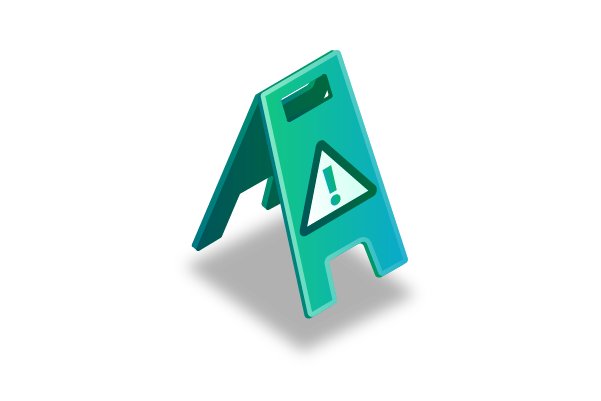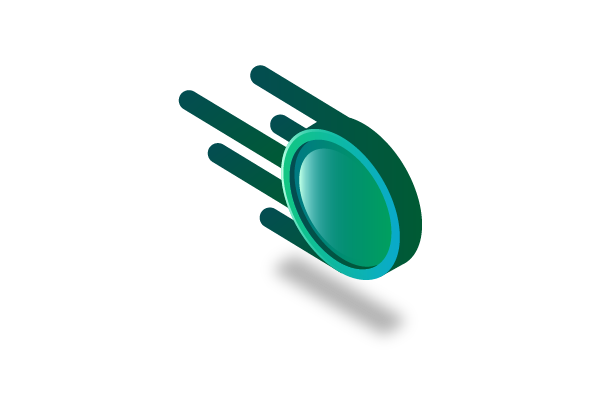In the realm of blockchain technology, the quest for scalability and efficiency has been an ongoing pursuit. Traditional blockchain architectures, while groundbreaking in their ability to establish secure and transparent networks, have not been without their drawbacks. As the demand for blockchain-based applications grows, the limitations of these architectures become more apparent.
Enter modular blockchain, an emerging approach that aims to address the scalability and efficiency challenges of traditional blockchain systems. By breaking down the monolithic blockchain architecture into smaller, more specialized modules, modular blockchain offers a promising path towards a more scalable, efficient, and versatile blockchain ecosystem.
Addressing Scalability Limitations

Scalability has been a major stumbling block for traditional blockchain setups. When more users and transactions flood the network, things can slow down considerably. This headache happens because all transactions need approval from every node on the network, leading to congestion and frustrating delays in processing.
That’s where modular blockchain steps in. It’s like a superhero with a layered architecture that neatly separates the consensus process from the execution environment. This separation supercharges the network, allowing it to process transactions in parallel, which is a fancy way of saying it can handle a lot more transactions at once. And there’s more – modular blockchain also gives us the nifty ability to offload some data storage tasks away from the main chain, easing its load and making scalability even better.
Also Read: What are Altcoins? A Guide to Alternative Digital Assets
In simpler terms, modular blockchain is like a smart upgrade that tackles the issue of scalability head-on. It splits the work into different parts, making the whole system run smoother and faster. Plus, it’s not afraid to delegate some data chores, taking the pressure off the main chain, and letting it handle more transactions without breaking a sweat.
The scalability issues of traditional blockchains stem from the need for every transaction to be approved by all nodes in the network. As more users and transactions join, the network becomes congested, resulting in delays. Modular blockchain architecture addresses this by separating the consensus process from the execution environment. This layered approach allows for parallel processing of transactions, significantly increasing the network’s capacity.
Furthermore, modular blockchains can offload some data storage tasks from the main chain, further alleviating the strain and enhancing scalability. This not only makes the system more efficient but also enables it to handle a higher volume of transactions without compromising speed or reliability. In essence, modular blockchain represents a strategic upgrade that directly tackles scalability challenges, dividing labor among different components to optimize overall performance and maintain high transaction throughput.
Enhancing Efficiency and Reducing Costs

Traditional blockchain systems face several issues, including scalability limitations and high transaction costs. These challenges are exacerbated by energy-intensive consensus mechanisms like Proof of Work (PoW), which not only strain the environment but also increase operational expenses. However, there’s a promising solution on the horizon: modular blockchain.
Modular blockchain introduces a more efficient consensus mechanism called Proof of Stake (PoS). Unlike PoW, PoS prioritizes validators based on their stake in the network, eliminating the need for energy-consuming mining processes. This shift to PoS brings about significant reductions in both energy consumption and operational costs, making blockchain not only more sustainable but also more cost-effective.
In this context, modular blockchain acts as a game-changer, allowing for the implementation of PoS algorithms. These algorithms bring greater efficiency to the blockchain ecosystem, enabling it to scale more effectively and process transactions at lower costs. As a result, businesses and individuals can benefit from a blockchain system that is both environmentally friendly and economically viable.
So, as we move towards modular blockchain and embrace PoS, we can anticipate a future where blockchain technology becomes more accessible, sustainable, and efficient, paving the way for a wide range of applications across various industries while minimizing the associated environmental and financial burdens.
Fostering Innovation and Versatility

Modular blockchain’s design is a game-changer, offering not only enhanced scalability and efficiency but also paving the way for greater innovation and versatility in the world of blockchain technology. This modular approach involves breaking down different functions of the blockchain into separate, interchangeable modules.
This separation of functions allows developers to create specialized modules tailored to specific applications, fostering innovation and enabling the development of custom blockchain solutions to address a wide range of use cases.
Moreover, the concept of modular blockchain goes beyond individual networks. It promotes interoperability between different blockchain networks by establishing standardized communication protocols. This means that different modular blockchains can seamlessly interact with each other, enabling the smooth exchange of data and assets across various networks. This interoperability creates exciting opportunities for collaboration and innovation within the broader blockchain ecosystem.
Imagine the possibilities when different modular blockchains can communicate and work together, sharing their strengths and capabilities. This collaborative approach can lead to the development of robust and versatile blockchain solutions that can address complex challenges across industries.
In essence, modular blockchain architecture empowers developers and organizations to think creatively, tailor blockchain solutions to their specific needs, and collaborate with other networks, driving innovation and versatility within the blockchain space.
Key Trends in Modular Blockchain Development
Modular blockchain development refers to the practice of building blockchain networks and applications using a modular architecture, where various components and functionalities are divided into discrete modules or layers. This approach offers several advantages, including flexibility, scalability, and easier maintenance. Here are some key trends in modular blockchain development that may have continued to evolve:
Interoperability
Interoperability remains a crucial trend in modular blockchain development. Developers are working on creating interoperable modules and protocols to enable seamless communication and data exchange between different blockchain networks. Cross-chain compatibility is essential for the broader adoption of blockchain technology.
Layer 2 Solutions
Layer 2 solutions, such as sidechains and state channels, continue to gain prominence. These off-chain scaling solutions help alleviate congestion on the main blockchain network while maintaining security and decentralization. Modular approaches make it easier to integrate and experiment with different layer 2 solutions.
Customizable Smart Contracts
Modular development allows for the creation of customizable smart contract templates. Developers can build reusable smart contract modules that can be easily configured and customized for various use cases. This enhances the efficiency of smart contract development and reduces the risk of vulnerabilities.
Security and Privacy Modules
As blockchain applications become more sophisticated, the need for robust security and privacy modules has grown. Modular development allows for the integration of security and privacy features, including zero-knowledge proofs, multi-signature wallets, and identity management, to ensure data protection and user security.
Decentralized Identity and Identity Management
Decentralized identity solutions are gaining traction as a means to secure user data and provide more control to individuals over their digital identities. Modular development facilitates the integration of identity management modules into blockchain applications, enabling users to manage their identities across various platforms.
Cross-Platform Development
Developers are increasingly exploring ways to create modular blockchain applications that can run across multiple platforms, including web, mobile, and IoT devices. Modular architecture allows for the easy adaptation of applications to different environments.
Governance and Consensus Modules
In modular blockchain development, there’s a significant focus on evolving governance and consensus modules. This approach allows blockchain networks to experiment with different methods of governance, striving for more adaptable and decentralized decision-making processes. By adopting modular designs, these networks can tailor their governance structures to better suit their specific needs and the preferences of their communities.
Consensus mechanisms, vital for validating transactions and maintaining the integrity of the blockchain, are also seeing innovation through modular development. This flexibility enables the integration of various consensus mechanisms, like Proof of Work, Proof of Stake, or newer, more efficient alternatives. By doing so, blockchain projects can choose or switch between consensus methods that align with their goals for security, efficiency, and scalability, thereby enhancing the overall functionality and adaptability of the blockchain system.
Ecosystem Collaboration
Collaboration among different blockchain projects and ecosystems is becoming more common. Modular development encourages collaboration by allowing developers to mix and match modules from various projects, fostering innovation and interoperability.
Sustainability and Energy Efficiency
In the blockchain industry, there’s a growing emphasis on sustainability and energy efficiency due to the high energy demands of traditional consensus mechanisms like Proof of Work (PoW), used in Bitcoin and Ethereum. PoW’s extensive computational requirements lead to significant electricity consumption, raising environmental concerns. In response, the sector is shifting towards more eco-friendly alternatives.
A popular solution is the adoption of Proof of Stake (PoS), which drastically lowers energy usage by selecting validators based on their coin holdings and stake, rather than computational power. Additionally, blockchain projects are incorporating sustainability modules, such as carbon credit trading, renewable energy tracking, and incentives for green practices. These developments represent an effort to align blockchain technology with global environmental goals and reduce its carbon footprint.
Developer Tools and Frameworks
The availability of developer-friendly tools and frameworks for modular blockchain development is on the rise. These tools simplify the process of building, testing, and deploying blockchain applications, making it easier for developers to embrace modular approaches.
It’s important to note that the blockchain space is continually evolving, and new trends may have emerged. Developers and organizations involved in blockchain development should stay informed about the latest developments and trends in modular blockchain development to make informed decisions and stay competitive in this rapidly changing field.
Predictions for the Future of Modular Blockchain
As we witness the ongoing maturation of modular blockchain technology, it becomes evident that its influence on the future of blockchain adoption is destined to be profound and far-reaching:
Widespread Adoption Across Industries
The trajectory of modular blockchain suggests a forthcoming surge in its adoption across a multitude of industries. Sectors such as finance, supply chain management, and healthcare are poised to embrace this technology due to its inherent advantages in terms of scalability, operational efficiency, and adaptability. This burgeoning acceptance signifies a pivotal moment in the blockchain revolution, as it transcends its niche beginnings to become a fundamental tool for various sectors.
Unleashing Innovative Applications
The modular architecture of blockchain is a catalyst for the emergence of novel and groundbreaking applications that were previously hindered by the scalability limitations of traditional blockchain systems. As modularity allows for greater flexibility and customization, developers are empowered to create previously unimaginable solutions, driving a new era of technological innovation. Expect to see pioneering use cases that harness the full potential of blockchain in ways we can only begin to fathom.
Also Read: What Is An Airdrop? Opportunities and Risks
Evolution of Consensus Mechanisms
The evolution of modular blockchain will not be limited to its structural aspects. We can anticipate the birth of more efficient and sustainable consensus mechanisms. These innovations will not only enhance the security and reliability of blockchain networks but also contribute to a significant reduction in energy consumption and operational costs. This shift towards more eco-friendly and cost-effective consensus mechanisms aligns with the broader global push towards sustainable and responsible technology.
In essence, the ongoing development of modular blockchain technology heralds a transformative era in which blockchain’s utility and reach extend far beyond its current boundaries. Its adaptability, coupled with the newfound freedom it offers to developers, promises to unlock a multitude of possibilities and reshape industries, all while aligning with the imperative for more sustainable and efficient solutions.
Conclusion
Modular blockchain is a game-changer in the world of blockchain technology. Its modular architecture has effectively tackled the scalability and efficiency challenges that hindered broader blockchain adoption. By breaking down blockchain systems into customizable modules, it offers flexibility and adaptability that were previously lacking. This fosters innovation, encourages versatility across industries, and greatly improves interoperability. As modular blockchain continues to mature, it is poised to revolutionize various sectors and shape the future of decentralized systems.
The modular approach to blockchain promotes innovation by allowing developers to create and integrate new modules easily. This collaborative environment leads to the rapid evolution of blockchain technology. Furthermore, its versatility makes it suitable for a wide range of use cases, from supply chain management to finance, and beyond. It offers tailored solutions that cater to specific industry needs, ultimately streamlining operations and enhancing security.
Additionally, modular blockchain’s improved interoperability means that different systems can communicate seamlessly, paving the way for cross-industry collaboration and the creation of comprehensive blockchain ecosystems. As this technology evolves and gains traction, it promises to drive efficiency, reduce costs, and increase transparency across various industries, positioning itself as a pivotal force in the future of decentralized systems.
Disclaimer: The information provided by HeLa Labs in this article is intended for general informational purposes and does not reflect the company’s opinion. It is not intended as investment advice or recommendations. Readers are strongly advised to conduct their own thorough research and consult with a qualified financial advisor before making any financial decisions.

Joshua Soriano
I am a writer specializing in decentralized systems, digital assets, and Web3 innovation. I develop research-driven explainers, case studies, and thought leadership that connect blockchain infrastructure, smart contract design, and tokenization models to real-world outcomes.
My work focuses on translating complex technical concepts into clear, actionable narratives for builders, businesses, and investors, highlighting transparency, security, and operational efficiency. Each piece blends primary-source research, protocol documentation, and practitioner insights to surface what matters for adoption and risk reduction, helping teams make informed decisions with precise, accessible content.
- Joshua Soriano#molongui-disabled-link
- Joshua Soriano#molongui-disabled-link
- Joshua Soriano#molongui-disabled-link
- Joshua Soriano#molongui-disabled-link

